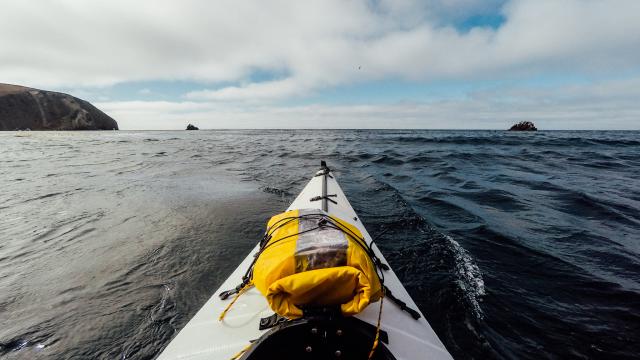About 30km off the coast of Ventura lies Santa Cruz Island — a remote mecca for adventure. We spent a weekend exploring it. Here’s how you can too.
After having a two-week and 320km sufferfest on the Sierra High Route, I needed to relax. My idea of relaxation, however, is kayaking around a remote island to a secluded beach and chasing fish around with a pointy stick — so when my buddy Alan (who I first dragged along the Trans Catalina Trail) invited my girlfriend and I to go camping on Santa Cruz Island, I couldn’t say no.
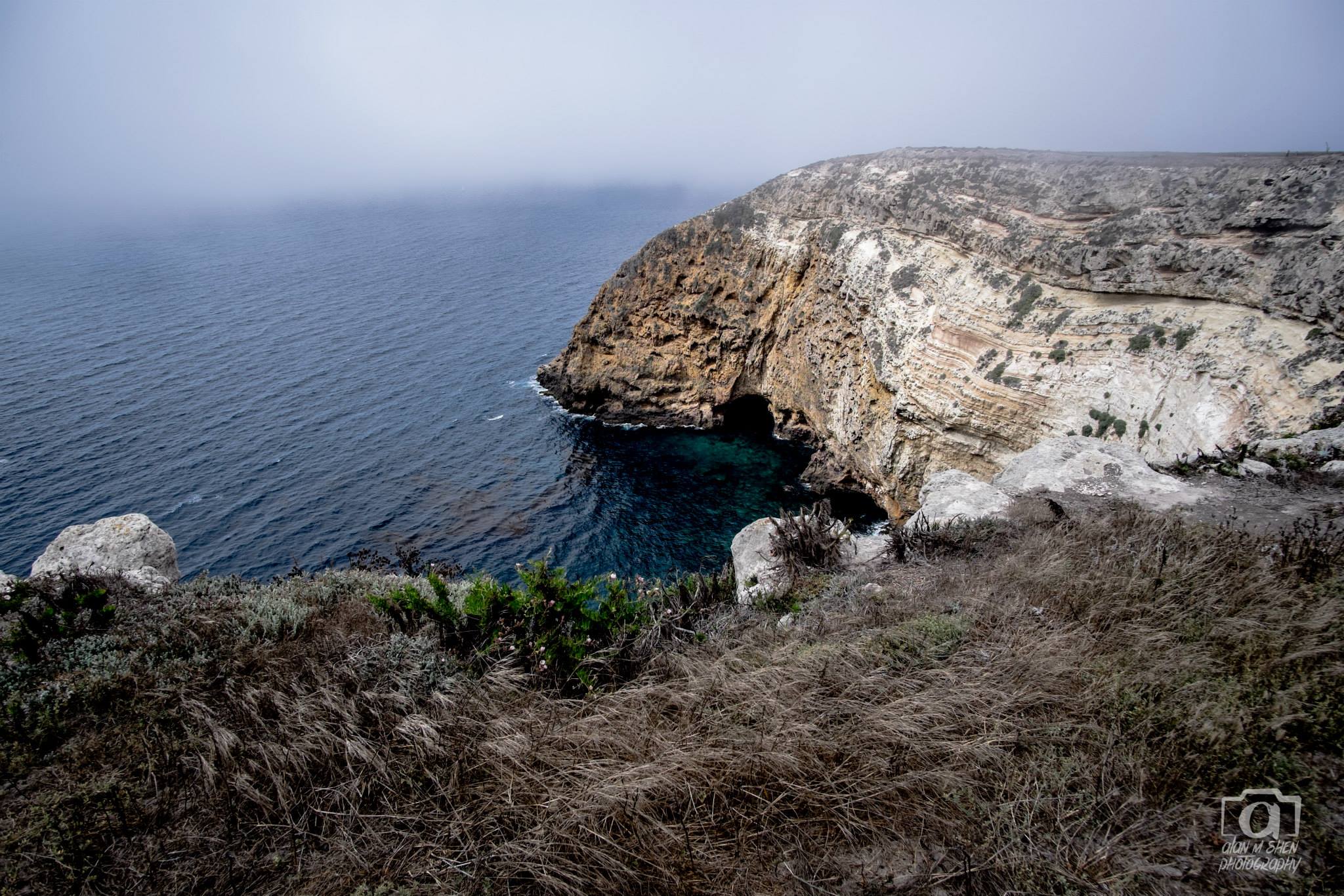
Santa Cruz Island features a rugged, steep coastline — while its interior is defined by mountains, valleys and plenty of plateaus. (Picture: Alan Shen)
Why Go?
At 35km long and 10km at its widest point, Santa Cruz is the largest of the Channel Islands chain. Its varied natural features — including steep rocky coastline, expansive sea caves and sandy beaches on its perimeter; and three mountain ranges, sheer canyons and rolling hills on its interior — present endless recreational opportunities for adventurers.
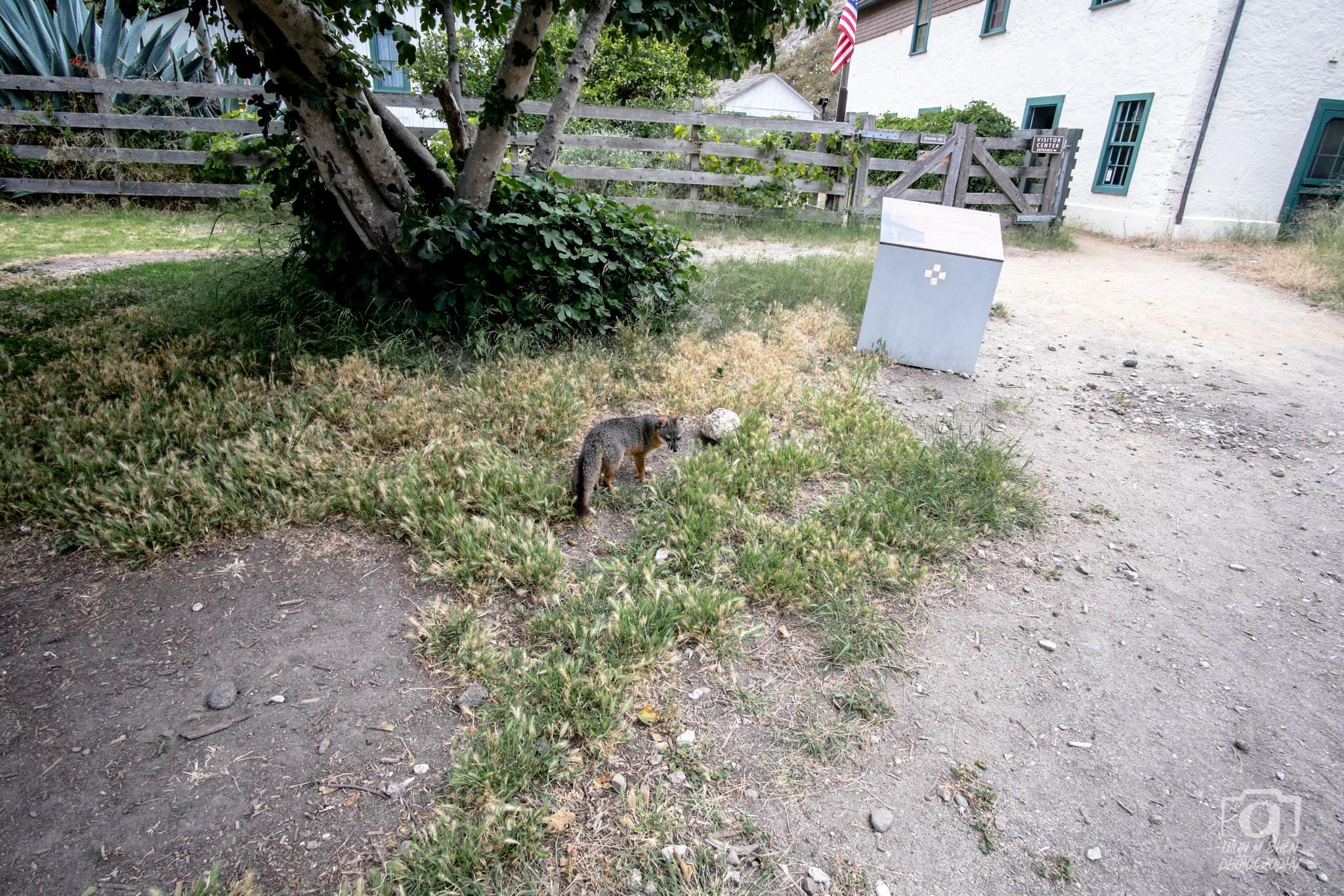
What does the fox say? (Photo by Alan Shen)
Into wildlife? Thanks to millions of years of isolation, the Channel Islands play host to a variety of unique plant and animal species too. For example, the island fox (which run rampant around the campgrounds on Santa Cruz) and island scrub-jay aren’t found anywhere else in the world. Humpback whales, dolphins, and a plethora of marine mammals can be seen on the ferry ride out there too.
Santa Cruz Island
We arrived at the Island Packers marina with just enough time to get our gear and the Oru Kayak loaded onto the ferry before taking off. The ride across the Santa Barbara Channel was a quick one filled with snacks, coffee, and sleepy conversation; within an hour we docked at Scorpion Anchorage.
Upon disembarking, all passengers were lined up along the dock and assisted in unloading everyone’s gear from the ferry, assembly-line style. Our boat was pretty full; almost everyone was camping. All-in-all the unloading process took about 30 minutes.
Afterward, the National Park Service rangers split us into smaller groups for orientation. They went over basic rules and precautions that were specific to the Channel Islands. Always carry water, use the “fox boxes” (standard bear boxes that had been converted with the placement of fox stickers) to store food, and take extra precautions because emergency response could be hours, or even days, away. For those fishing (me), we were provided with information about the Marine Protected Areas (don’t fish in Scorpion Anchorage) and sent on our way.
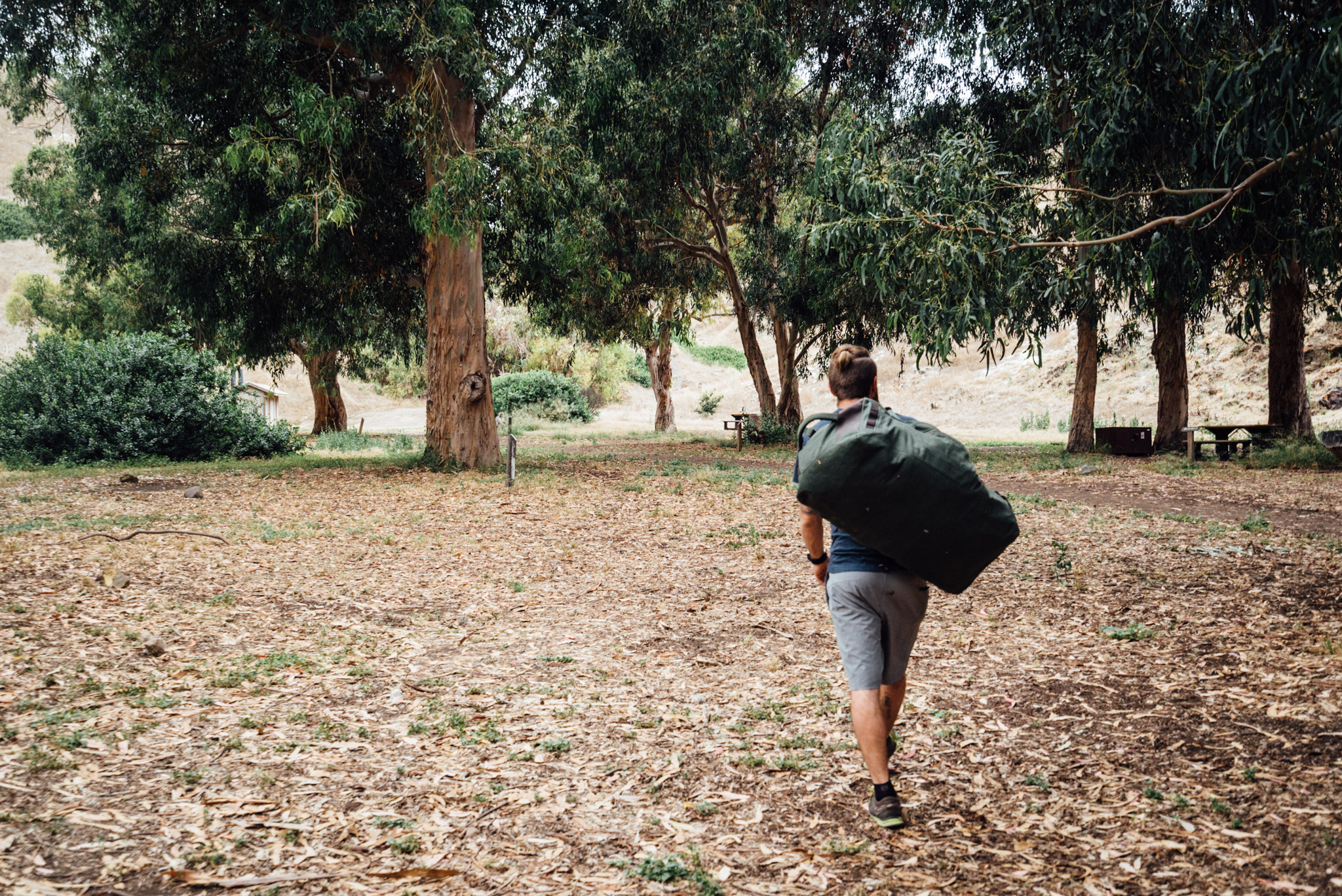
The campgrounds at Scorpion Anchorage were shaded by massive, non-invasive eucalyptus trees. Pack is the United By Blue Baxter Convertible Duffel ($US229). (Photo by Katherine Kim)
Due to the islands’ carefully cared-for environments, no wilderness camping is allowed. Instead, those wishing to spend the night are relegated to a couple of campgrounds, located about 800m from the dock. Despite the island’s overall ruggedness, the campgrounds were pretty nice. Each site was rather large; sites weren’t cramped together either. Massive eucalyptus trees provided ample shade throughout the day, while their fallen leaves provided soft beds to sleep on. Clean restrooms were on either side of the campgrounds; potable water faucets were located throughout.
There were three sets of couples camping in our group; each staked out a claim of land, set up their tents, and unpacked their food — storing it securely in the fox box located on our site. Afterward we split up to do a couple of different hikes. Alan, Jing, Matt, and Jen headed north along a coastal trail while Katherine and I took a short but rugged hike down to scope out Little Scorpion Anchorage — the only accessible place by foot where fishing was allowed. We’d be spending most of the next day there while Katherine tanned and I hunted for dinner.
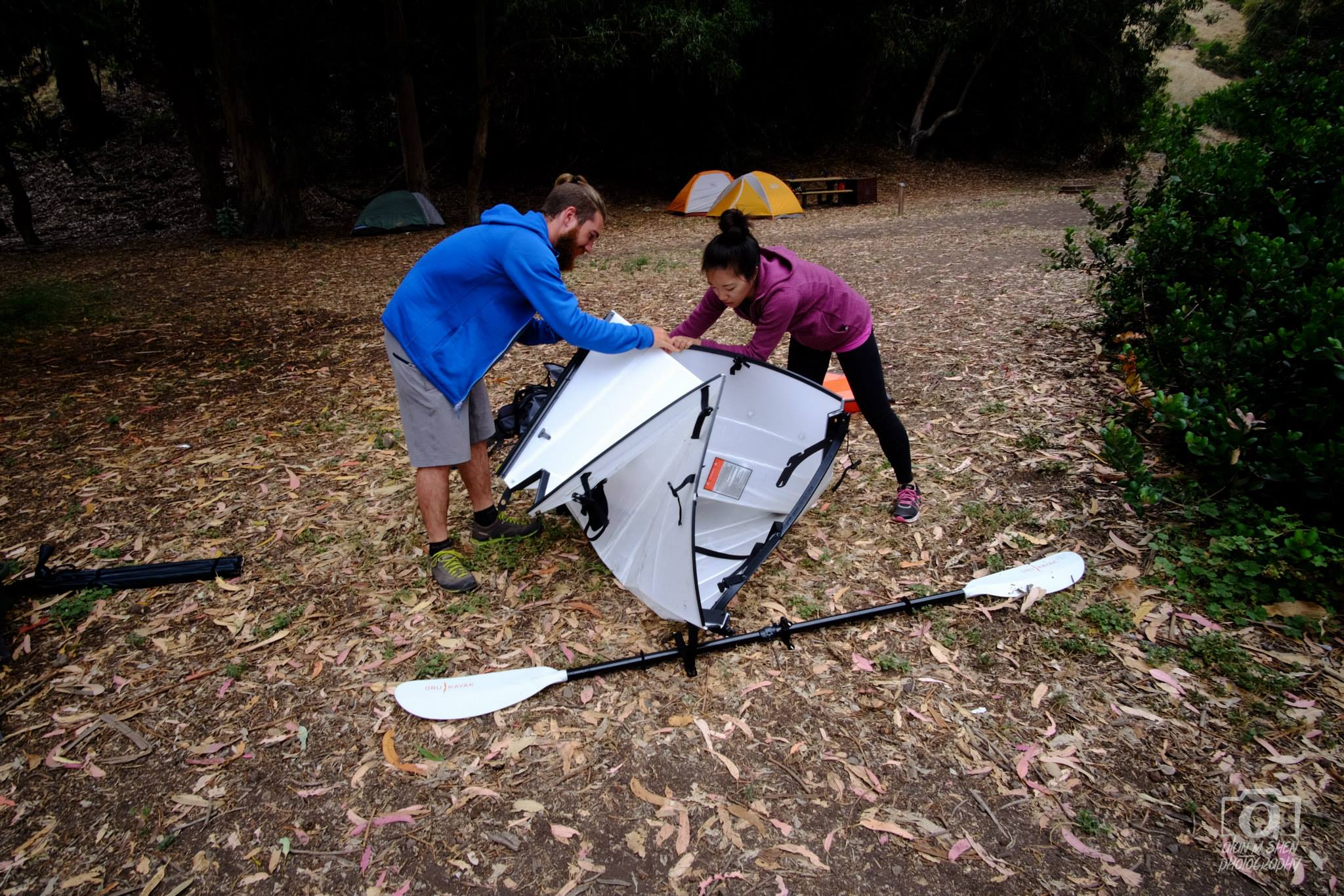
This is what setting up the origami-style Oru Kayak is like. (Photo by Alan Shen)
The following morning we ate a hearty breakfast scramble of eggs, bacon and sauteed vegetables before heading to the beach. Katherine helped me assemble the origami-inspired Oru Kayak before splitting off to meet me at Little Scorpion Anchorage. I loaded the kayak up with spearfishing gear and paddled out.
My only human-powered experience on the sea has come from paddling crappy rental Ocean Kayaks, which handle about as well as a cargo ship. The Oru, by contrast sat low in the water and glided through like a knife. It felt a bit unstable at first, but it handled the coastal current like a champ. I reached the secluded Cove within ten minutes; Katherine arrived shortly after.

The rugged, water resistant Outdoor Tech Turtle Shell 2.0 ($US99) remained safe from sea spray while providing up to 16 hours of tunes on the beach.
Katherine set up her relaxation station while I suited up. This would be my second time spear fishing. On the first, a group camping trip last summer on Catalina, I earned the nickname “Fishslayer” after spearing ten fish and a Round Stingray with Wes’s JBL Travel Polespear ($US140) (a traditional Hawaiian Sling that breaks down into three sections for easy transport) in a day — ensuring that all ten people in our group had fresh fish for dinner.
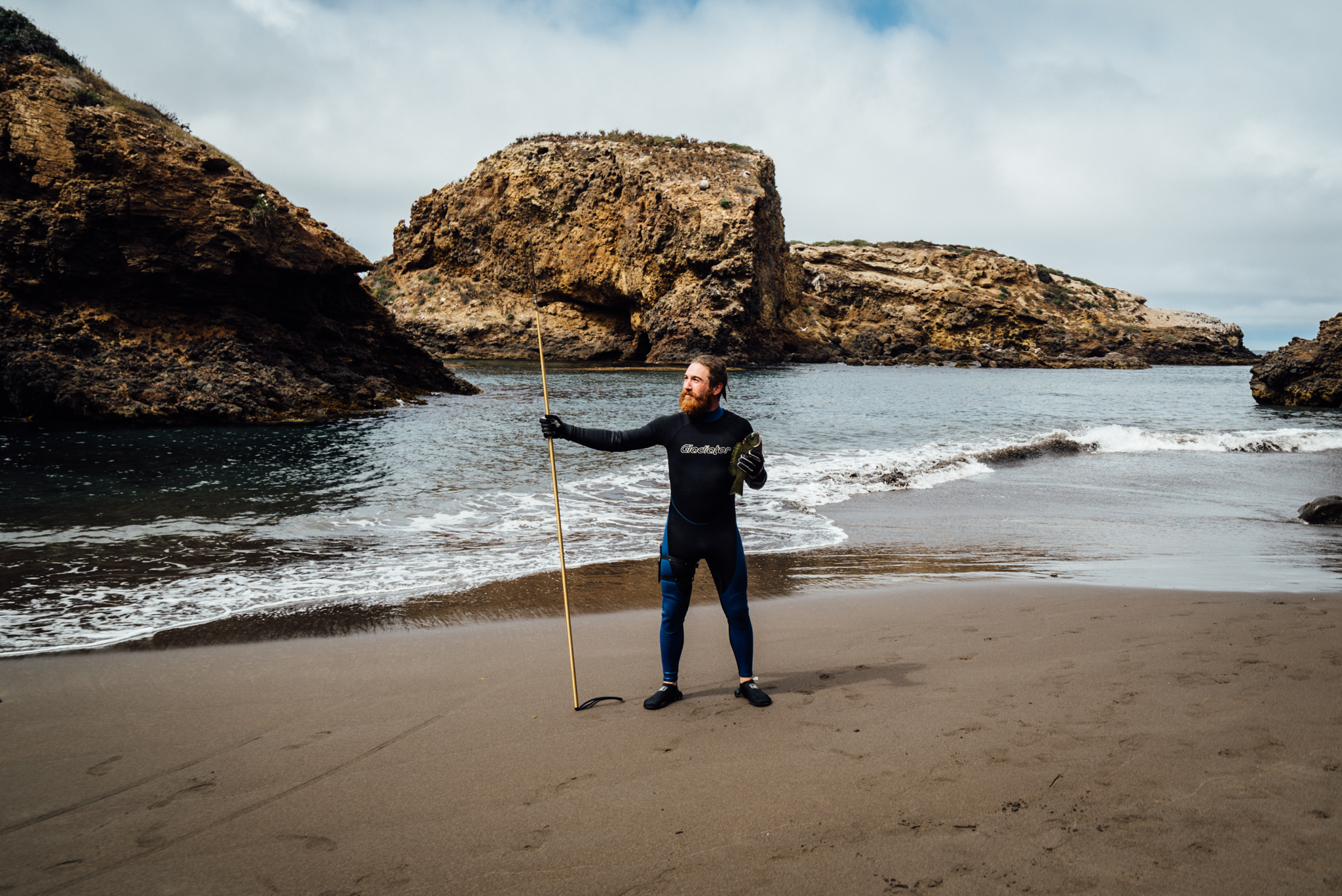
Suited up; standing proud, post-hunt. (Picture: Katherine Kim)
With a confidence that comes from such a successful trip, I only packed meat for breakfast on this one; instead decided to rely solely on spearfishing for dinner’s protein. The fish inhabiting Little Scorpion Anchorage, however, had ambitions that starkly contrasted my own.
On my previous trip to Catalina, the sea perch which we most commonly encountered were relatively docile and displayed little desire to stay alive. They were quick, to be sure, but not unattainably so. The fish near Santa Cruz Island’s most accessible harbour, however, were fast! And they were alert. I couldn’t get closer than twenty feet without them reacting to my presence with lightning-like reflexes and swimming away. I would have my work cut out for me.
Two hours later, I was shivering cold, my legs were starting to chafe from my ancient wetsuit, saltwater was parching my throat, and I still hadn’t even gotten close to spearing a fish. It was time to regroup.
After eating some bread to soak up the saltwater taste from my mouth, rehydrating, and taking a nap on the beach, I was ready to go back out. With dinner and my pride on the line, I was determined to get a fish. Eventually my perseverance paid off; I nabbed a small sea perch.
By late-afternoon, clouds had rolled in, bringing with them a cool, gusty breeze — less than ideal conditions for laying out on the beach. Katherine and the rest of our friends who had stopped by after their hike were ready to go back to camp. But I wasn’t done yet. I just needed one more fish for dinner.
I set out once more — hungry, and more determined than ever. I swam over to the nearest kelp forest and scanned the perimeter before making a few loops around the ocean habitat. Out of the corner of my eye, I spotted a large perch swimming left; it’s trajectory led it right in front of me. At once, I pivoted, dove, and kicked, propelling myself forward; just within range. I instinctively pulled back the sling. Ready. Aim. Fire!
The GoPro Hero4 Session’s ($US400) compact, streamlined design allowed me to capture dynamic first person spearfishing footage.
A hit! My three-pronged trident struck the perch cleanly through its gills; pinned it to a rock protruding from the ocean floor. In one swift move, I lunged forward and clamped my hand around the end of the spear to secure our dinner. Next I reached down and grabbed my dive knife and pushed its point through the fish’s skull for a clean, humane kill. There is no more fulfilling feeling than a successful hunt!
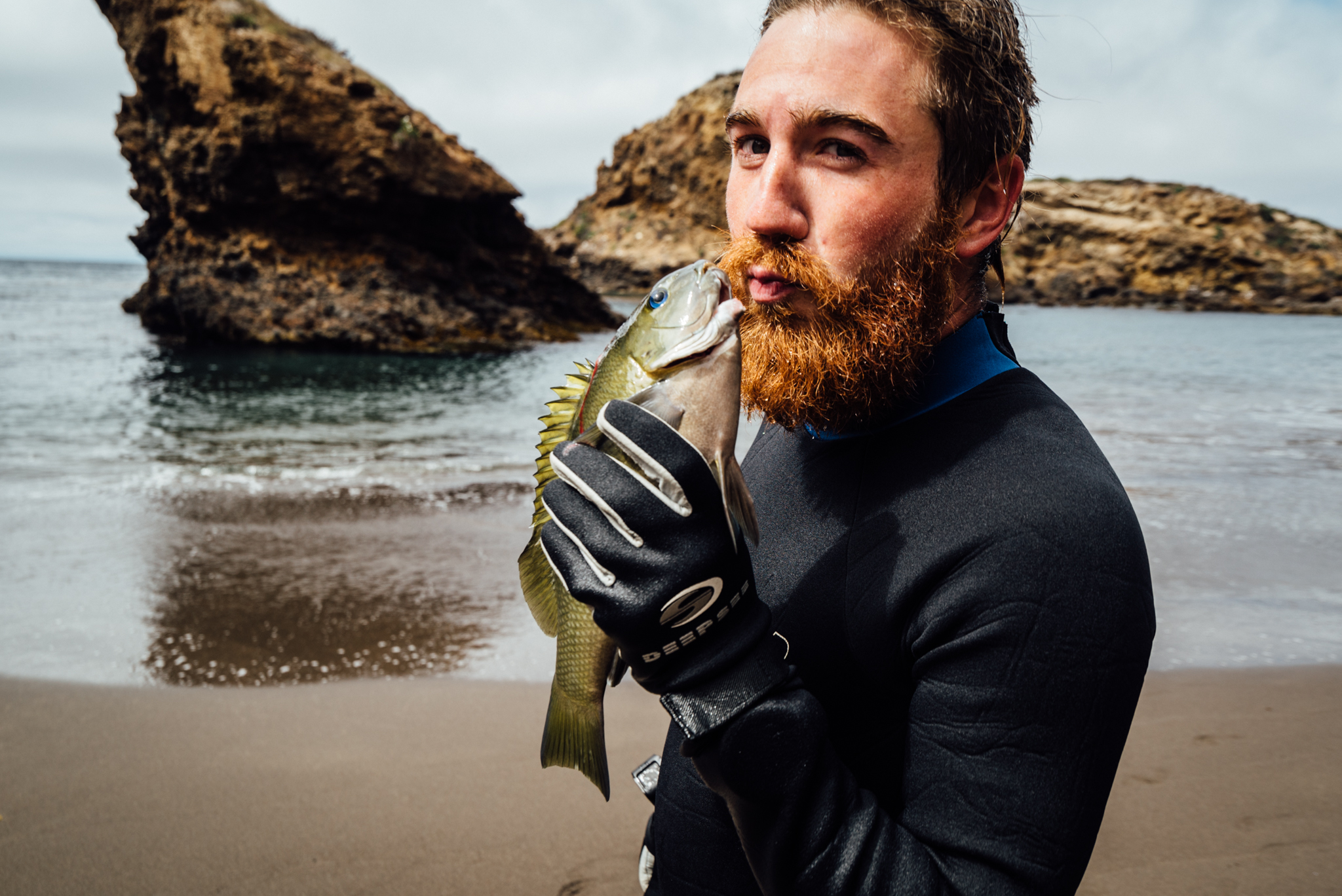
A kiss for my fish. (Photo by Katherine Kim)
With our dinner in-tow, I swam back to the beach where the rest of our group was waiting. By this time, a few other guys had showed up with a couple of pole spears and masks. First, they asked if they could take a picture holding my fish. I responded “that privilege is reserved for the fishermen themselves.” Then they asked for some first-timer tips. After providing them a few pointers, a local man who had beached his dingy nearby responded, “Don’t get your hopes up, this place has sadly been fished out.”
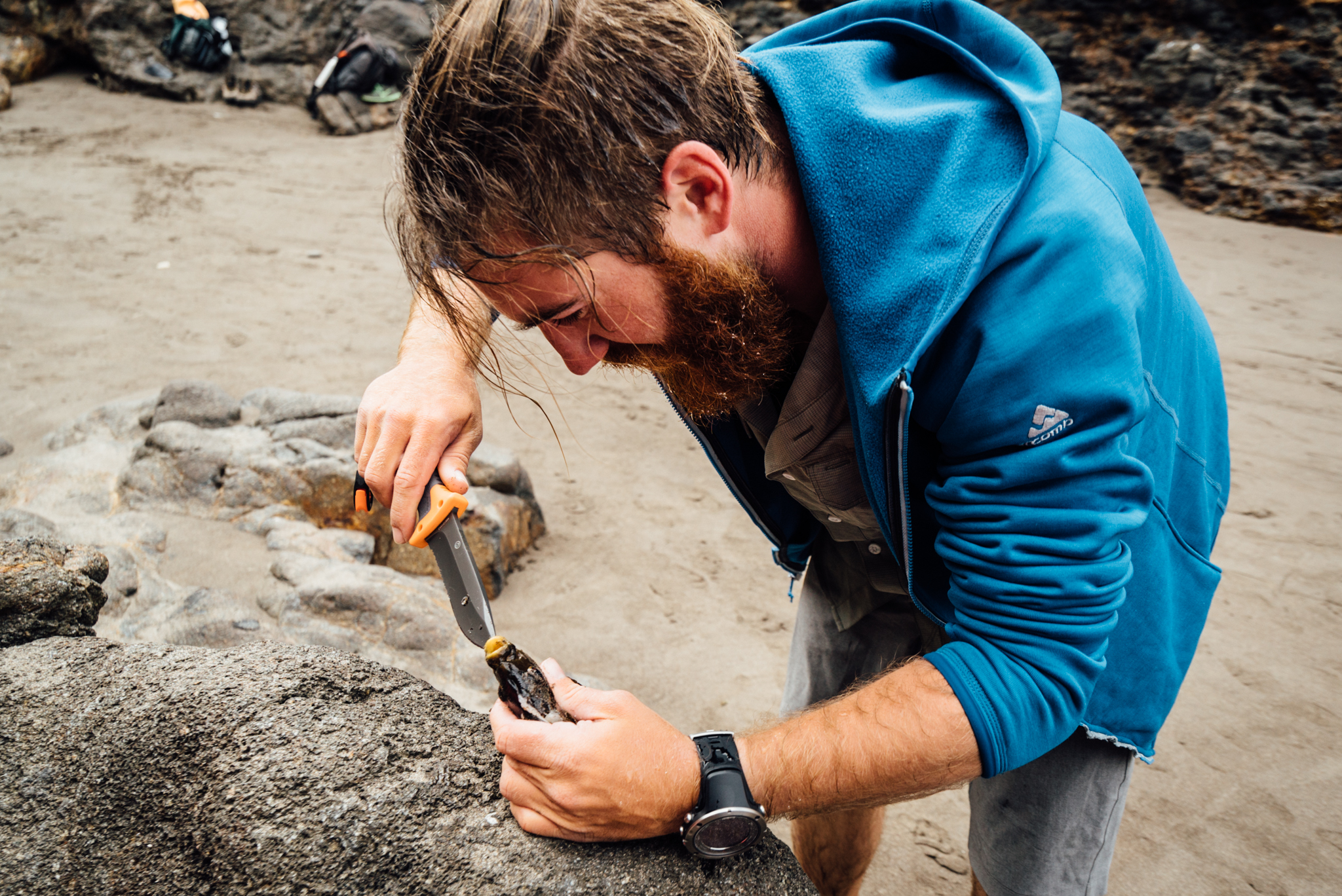
Due to the prevalence of foxes around the campgrounds — anglers are required to clean their catches on location; away from camp. Having a small plastic tarp would have been incredibly useful for keeping the filets sand-free. (Photo by Katherine Kim)
I offered the guys my smaller fish on the condition that they clean it themselves, but they declined, so I went to work cleaning and filleting our freshly caught dinner before packing up the rest of my gear and kayaking back to the main harbour.
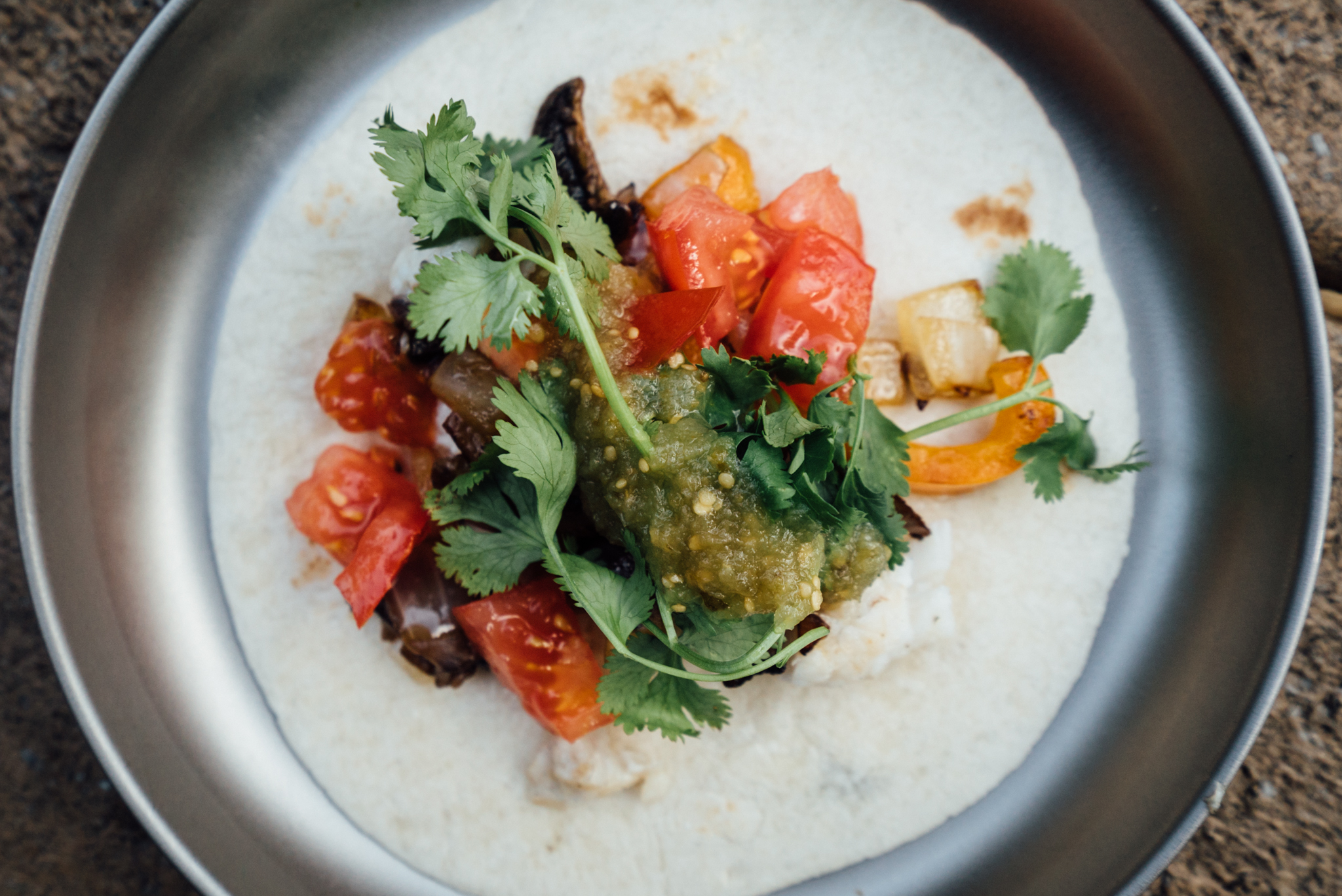
Fresh fish fajitas hit the spot!
Back at camp, Katherine started preparing our vegetables while I lined the pan with leftover bacon grease from that morning’s breakfast. We’d be having fish fajitas that night; with the catch of a second fish, there was plenty to share.
The next morning we rose early, cooked breakfast, broke camp, and caught the 12 pm ferry back to the mainland, concluding our perfect island getaway.
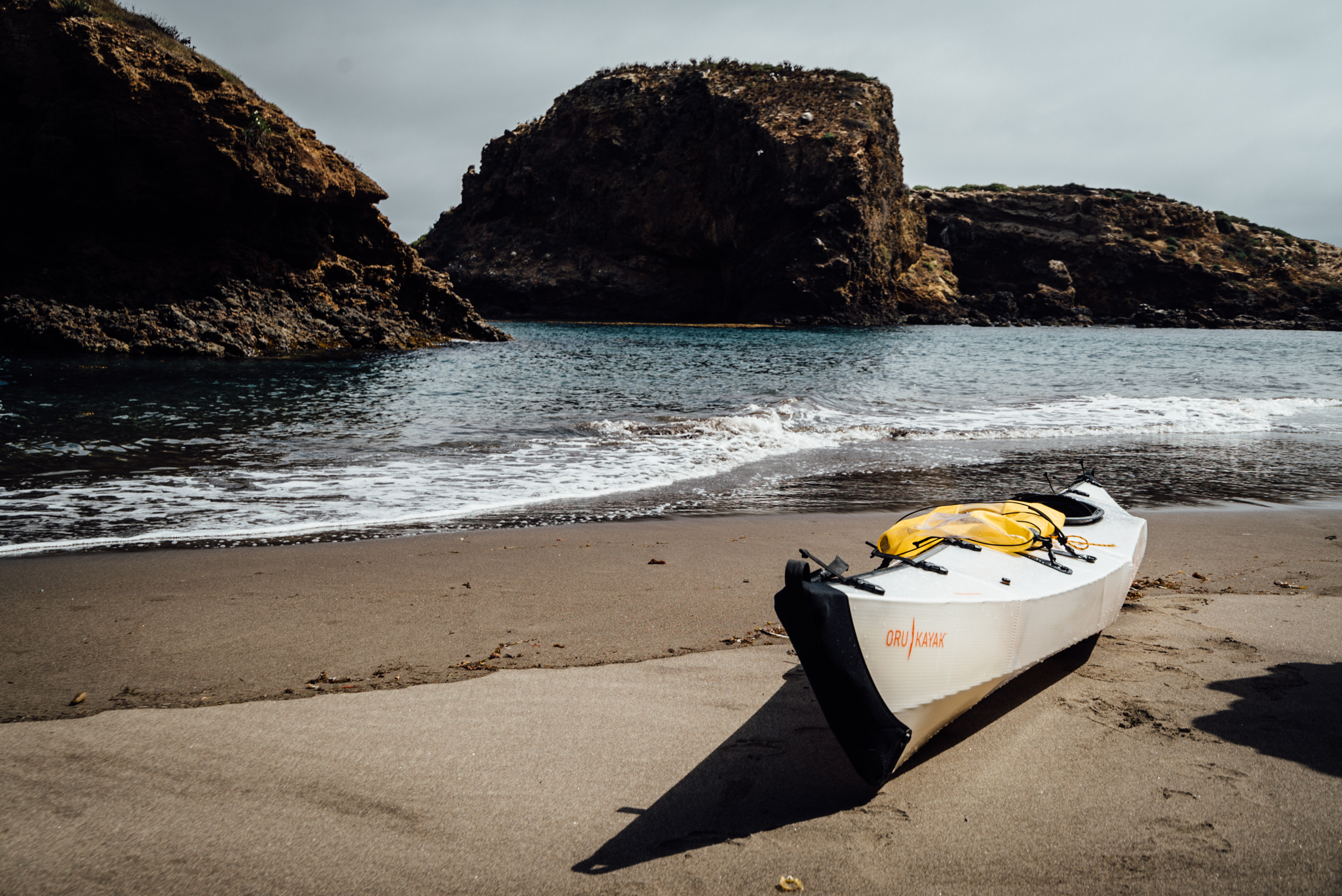
The incredibly portable Oru Bay Kayak ($US1195) provided plenty of opportunities for exploration around the island.
What You’ll Need To Bring
If you plan on staying overnight on Santa Cruz Island, you’ll need to reserve a campsite though Recreation.gov. Regular family sites (up to 6 people) run $US15 per night, while larger group sites (up to 15 people) run $US40 per night.
The campgrounds are only a short, level, 800m walk from the dock, so it’s possible to bring more luxurious car-camping type gear. A cooler with wheels will allow you to bring real food, which is usually more appetising than the freeze-dried fare.
There are also potable water spigots located throughout the campgrounds, so it’s not necessary to bring your own water to the island. However, there is no access to water while hiking, so it’s necessary to have plenty of carry capacity of you plan to venture out.
There are a ton of recreation opportunities on the island such as kayaking, hiking, fishing, and snorkelling; so plan your gear accordingly. Some equipment rentals (snorkelling gear, kayaks, etc) are available from Ventura, but check with the outfitters on rates and availability.

The Sunskis Taravals ($US58) provide stylish, polarised eye protection that won’t break the bank.
How Do You Get There?
The best way to get out to Santa Cruz Island is via the Island Packers ferry. A round-trip, adult overnight fare runs $US79. The ferry ride takes about an hour; on our ride we spotted a handful of dolphins, and even a humpback whale! There were snacks and drinks available for purchase on the ferry (for reasonable prices too) in case you get hungry or thirsty along the way.
Be sure to arrive an hour before departure in order to have your equipment loaded. If transporting a kayak out to Santa Cruz Island (rented, or personally owned) you’ll have to reserve it ahead of time (act quickly, there are only eight kayak spots available; they fill up fast) and pay an additional $US28 fee. I was disappointed to be charged the transport fee for the Oru Kayak, considering that it folds up into a rectangular box no larger or heavier than a big ice cooler.
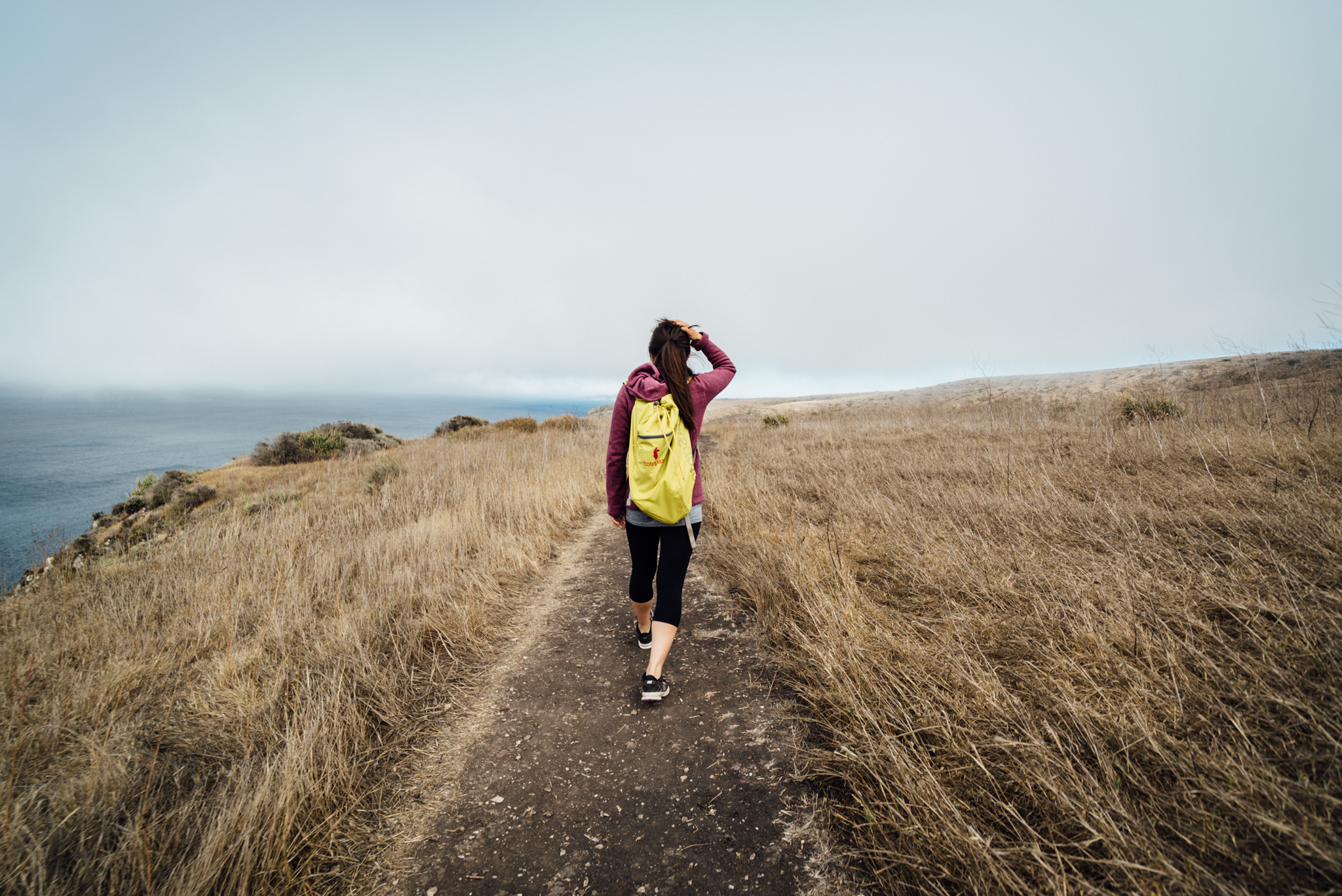
With an internal hydration bladder and exterior zippered pocket, the Cotopaxi Luzon 18L ($US30) is a simple, lightweight daypack that’s perfect for shorter hikes which don’t require tons of gear.
What Else Should You Do While You’re There?
Though Katherine and I didn’t do much hiking, Alan, Jing, Matt and Jen explored the island’s trails quite a bit. Free maps island and trail maps are available from Island Packers, so pick one up before you head out.
There are also heaps of coastal sea caves that can be explored — including Painted Cave, one of the largest sea caves in the world. Book a tour, or rent a kayak and explore it on your own.
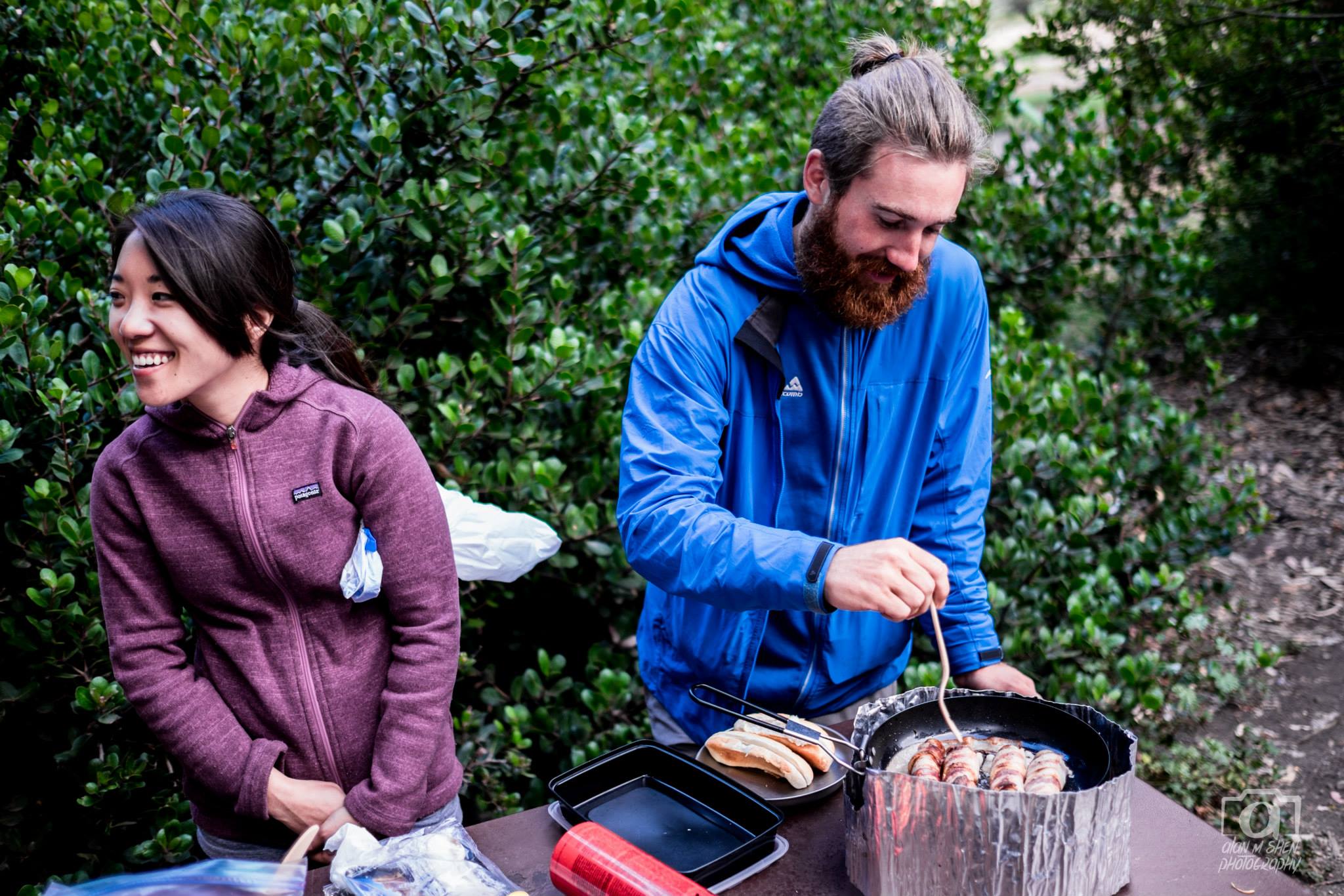
Sauteed vegetable goodness.
What We Would Have Done Differently
Katherine and I were the only ones on the trip that packed real food; Alan and the others wished that they had brought some too, instead of dehydrated backpacking meals.
If we had access to a second kayak, we probably would have found a more secluded cove to explore and fish around, where hopefully there would have been a better catch. It would have been great to explore some more of the island’s interior too, but fresh off the Sierra High Route, all I wanted to do was eat, sleep, and fish.
About the Author:Chris Brinlee Jris an adventurer and storyteller who can’t stay put for more than a few weeks at a time. Follow his adventures on Instagram:@chrisbrinleejr.
Pictures: Chris Brinlee Jr, unless otherwise noted
